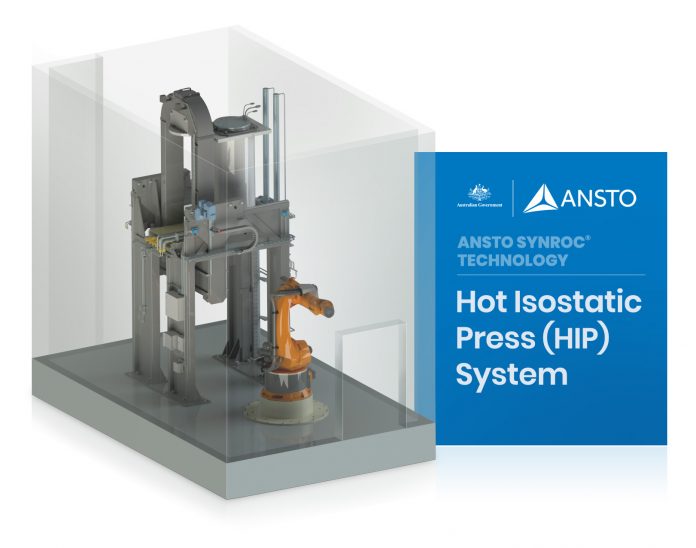
Media Release
ANSTO is the first in the world to create a fully automated, industrial scale compacting system suitable for use in the treatment of radioactive waste.
The new technology features a robotic arm and an advanced high pressure and temperature unit to increase efficiencies and safety in the waste management process.
ANSTO has utilised great Aussie research to develop new ways of safely managing radioactive waste that can benefit the world.
Whilst Australia has comparatively small amounts of radioactive waste compared to countries with nuclear power, the new waste treatment technologies have been developed right here by ANSTO.
ANSTO’s Synroc® technology is an innovative, cost effective, low risk way to reduce the volume of waste and treat it so it is suitable for long term storage and eventual disposal.
ANSTO Synroc® technology converts waste into a rock-like form that locks up the radioactive elements. The technology will be used to treat Australian radioactive waste from the production of nuclear medicines, and it can also be adopted by organisations overseas with larger volumes of radioactive waste.
Quintus Technologies was commissioned by ANSTO to design and build an automated Hot Isostatic Press (HIP) system that uses robotics to carry out operational and maintenance functions which play a key role in ANSTO’s Synroc® facility located at the Lucas Heights Campus.
HIP involves applying pressure and heat to a canister that contains a mixture of radioactive waste and an additive formulation to ensure it becomes compact before it is stored.
ANSTO engineers had planned to fly to Sweden to test the product with Quintus earlier this year, however when COVID-19 travel restrictions were imposed, a new ‘virtual’ testing procedure was established.
The ANSTO team worked with the Quintus team virtually to ensure the technology met factory acceptance requirements through daily video conferences and the sharing of photos and test outcomes.
Michael Deura from ANSTO, said the new technology, which met testing requirements, would allow ANSTO to improve efficiency and safety.
“I am pretty excited to see the HIP system in action at ANSTO. This type of innovation will change the industry and how it operates in the longer term,” Michael said.
“This HIP system is a global first for nuclear waste management,” Gerry Triani, ANSTO Synroc® Technical Director said.
“It’s housed within a shielded enclosure operating remotely to effectively reduce the volume of the waste and provide a terminated solution for by-products arising from Mo-99 nuclear medicine production.”

















